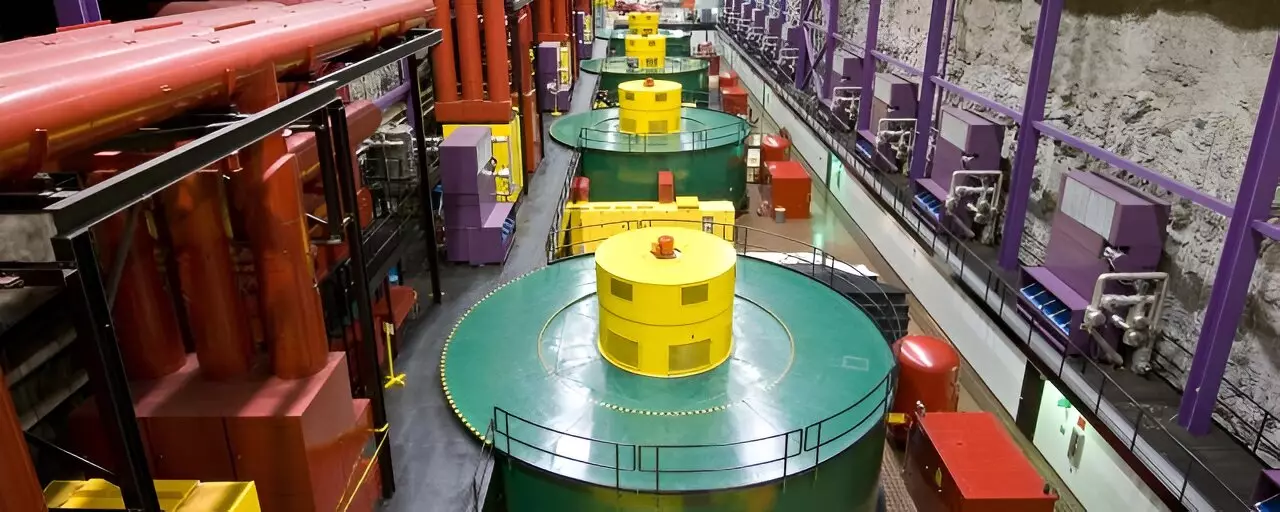

As the electric grid relies more on intermittent renewable power, predicting grid stability becomes crucial. Scientists from Oak Ridge National Laboratory (ORNL) and the University of Tennessee, Knoxville (UTK), have developed an algorithm that utilizes signals from pumped storage hydropower projects to accomplish this. By incorporating information from low-cost grid sensors and the unique signal generated by pumped storage hydropower, the algorithm provides real-time estimations of grid inertia and enhances situational awareness. This groundbreaking method offers valuable insights and prepares grid operators for potential grid instability.
Hydropower is a renewable energy source that directly connects to the grid, providing stability through inertia. Pumped storage hydropower (PSH) is a specific type of hydropower that pumps water from a lower to an upper reservoir during times of low power demand, effectively creating an energy storage bank. When power demand is high, the water is routed back to the lower reservoir through turbines, generating electricity. However, when the pumps shut down, they always stop at a fixed power level, creating a distinct signal on the grid that can be utilized to calculate overall inertia.
While renewable energy sources like solar and wind are essential for transitioning to a greener grid, they present challenges regarding grid stability. Solar and wind power are connected to the grid using inverters, which convert the direct current (DC) power generated by renewables into alternating current (AC) power for transmission. This conversion process reduces the amount of inertia provided by these energy sources. Consequently, grids reliant on inverter-connected renewable energy have less tolerance for sudden changes, such as storm damage or unusual demand peaks.
To address the challenges posed by inverter-connected renewable energy, researchers at ORNL and UTK developed a new algorithm. This algorithm combines the PSH signal with data collected from low-cost grid sensors deployed nationwide through the FNET/GridEye system. By incorporating both the PSH signal and sensor data, the algorithm delivers accurate estimations of grid inertia in real-time.
To promote ease of use for grid operators, the research team also designed a visualization interface to monitor grid inertia using the algorithm. This visualization tool allows operators to efficiently prepare for potential grid instability by providing them with essential information. The validity of this new approach was confirmed through collaboration with utilities and power regulating authorities in the western and eastern United States, where pumped storage hydropower plays a significant role.
With the increasing integration of renewable energy sources, the importance of grid situational awareness and stability grows. The algorithm developed by the scientists from ORNL and UTK, in conjunction with the visualization interface, contributes significantly to this goal. By demonstrating the crucial role of inertia and the impact of pumped storage hydropower, the algorithm facilitates the integration of intermittent renewable energy into the grid. Utilities and grid coordinating authorities, such as the North American Electric Reliability Corporation, are currently evaluating the visualization tool and considering its implementation.
The new algorithm developed by scientists at ORNL and UTK, utilizing signals from pumped storage hydropower projects, offers a groundbreaking approach to predict grid stability. By combining the PSH signal and data from low-cost grid sensors, the algorithm provides real-time estimations of grid inertia and enhances situational awareness. The accompanying visualization tool further aids grid operators in monitoring grid stability and prepares them for potential instability. This innovative approach will play a vital role in the future of grid stability as renewable energy sources become increasingly predominant.
Natural gas leaks are a growing concern in both urban and rural settings, with potential…
Recent groundbreaking research at the University of Vienna has unveiled a novel interplay of forces…
In recent years, perovskites have garnered significant attention in the fields of materials science and…
For decades, astronomers have probed the depths of the Milky Way, grappling with two perplexing…
Foreign direct investment (FDI) in developing nations has long been heralded as a path to…
As spring beckons in April and May, stargazers have the unique opportunity to witness nature's…
This website uses cookies.